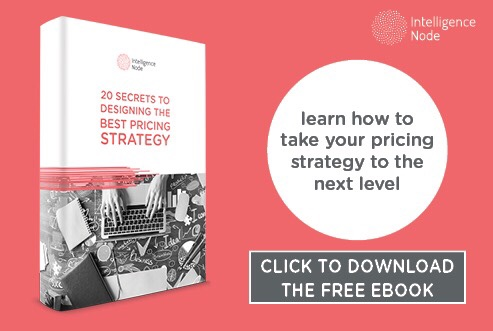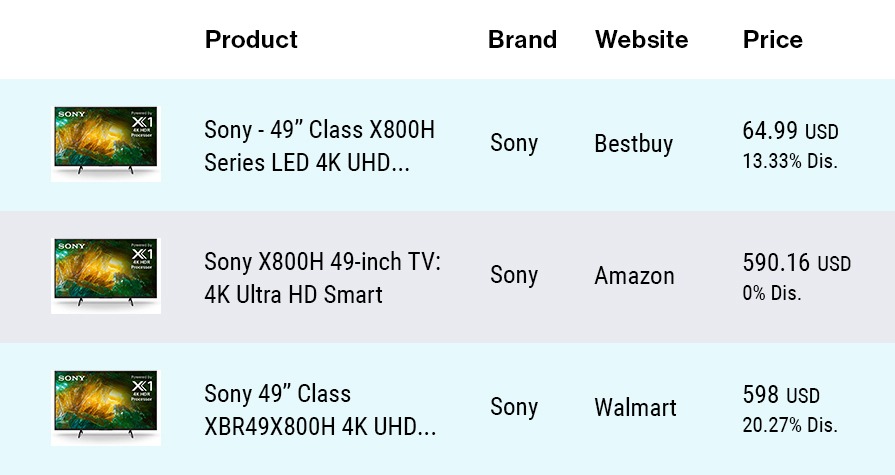The eCommerce landscape is growing tremendously in the post-pandemic economy. Infact, in 2021 the number of online stores exceeded 24 million globally with thousands of new stores being set up online everyday. The online competition has intensified and every business is fighting to get the attention of the same shopper. And, one of the most important factors in attracting and converting these online shoppers into your loyal customers is eCommerce pricing.
On its own, eCommerce pricing is a complex subject that requires a thorough understanding and analysis, yet it is massively important. If you set it right, the sales and profits will flow. Get it wrong and, well, you know, you’re doomed. Your pricing affects everything, from profit margins and sales to brand positioning and market share. So, what’s the trick? How do you implement an eCommerce pricing strategy that conveys everything you want to stand for as a digital-first company while bringing in profit and customers in the process?
Businesses have the luxury to choose from a variety of pricing strategies, depending on the goals and objectives they set. Of course, none of those matter if they are not based on market research, competitor pricing strategies, customer demand and market trends. For all the digital brands and retailers out there, eCommerce pricing has become much more complex due to dynamic pricing employed by many market leaders and the comparative nature of the online shopper. It is then vital to understand who your target audience and competition are, to be able to determine an effective pricing strategy for all. Not every price you determine needs to produce maximum profit margins but needs to strike a balance between conversions, profitability, and product margins.
In this blog post, we will cover some of the key eCommerce pricing strategies that retail businesses can employ in order to determine prices for their products that benefit both the business and the customer.
Contents
1. Premium pricing
Premium pricing strategy allows a business to set its prices higher than the competition. It’s an effective strategy for a business whose niche is selling unique goods, as well as for the times when you are first in placing a product on the market that has a specific competitive advantage. Premium pricing strategy can be a good choice for businesses entering a new market and trying to cash in the early days of a product’s life cycle.
In order to justify the premium price, a company must create a perceived value of its product or service. Every aspect needs to support the notion of the premium price, including design and packaging, shipping and returns, personalization, and marketing efforts in order for the customers to perceive the product as worth its price.
E.g. Apple has consistently employed premium pricing for its iPhones and Macbooks and created a perceived value and exclusivity that has kept it at the top of the smartphone ladder for years.
2. Penetration pricing
In the instance of a penetration pricing strategy, a company is looking to establish its presence in a new market by offering lower prices (sometimes at a steep discount) than its competitors. The reason why companies use this price is to attract customers and shoppers away from the competition, which often results in an initial, albeit calculated income loss but helps build a solid customer base.
The point of penetration pricing is to raise brand awareness and brand loyalty in the crowded market and stand out so that in the long run, a company can effectively raise its prices that actually reflect their true market positioning. It especially makes sense in the highly competitive eCommerce market where new and existing players are making waves every day. E.g.: Netflix is a great example of penetration pricing. By offering a free or low priced subscription for the first month, Netflix lets users try its service, which in turn has seen a massive increase in its paid subscriptions.
3. Price skimming or milking
In the third P of pricing strategies, price skimming acts as a way for a business to leverage their competitive advantage and maximize their sales on new products and services. Contrary to penetration pricing, a company initially sets a higher price, then gradually lowers it as the competition begins to catch on and offer similar products or alternatives.
The primary benefit of price skimming is a strategic approach to gain maximum revenue advantage on early adopters until it lowers prices to cater to more price-sensitive groups. It can be highly useful for smaller businesses who can cover the development cost of their unique products and reap the benefits of perceived exclusivity in the early stages.

4. Psychological pricing
Psychological pricing strategy is more of a technique that plays on the customer’s emotional perception (thus the name) of the price, down to the small details that can make a difference. It’s a widely used pricing strategy that is one of the favorites of many marketers.
As an ever-present example, a product with a $99 price tag is cheaper than a product of $100. That is clear as a sunny day but in the mind of a buyer, $99 is psychologically “less” than $100, possibly due to the fact it has one less digit (as in our example) or that consumers have a tendency to pay more attention to the first number on a price tag than the last. In essence, you are creating an illusion of enhanced value (cheaper price) for the consumer.
5. Dynamic Pricing
Dynamic pricing has gained immense popularity in the last few years with the online competition hitting the roof and retail giants like Amazon and Walmart successfully using it to offer competitive pricing at all times. While dynamic pricing was already popular in categories like airlines and hotels, where prices increased during peak seasons and reduced during off-seasons, it is now being widely used in eCommerce to beat the competition and win today’s comparison shoppers. In dynamic pricing, retailers and brands can optimize their prices daily or even multiple times a day based on pre-configured rules and market trends like competitor pricing, competitor stock-outs, seasonal demand, etc.
Dynamic pricing can only be successful if you are able to respond to market changes immediately. And for that, you need advanced dynamic pricing solutions that can automate your pricing and optimize it in near-real-time based on multiple essential factors.
Example: Amazon is a living example of dynamic pricing done right. Its sophisticated, AI-driven pricing engine enables it to review and optimize prices of millions of its products every 2 minutes to offer the most competitive deals and offers. This pricing strategy has enabled Amazon to retail its title as the global retailer leader and to win customers and market share across geographies.
6. Competitive Pricing
With over 88% of shoppers comparing prices while browsing for products online, competitive pricing becomes very important to convert these shoppers into buyers. Competitive pricing or competition based pricing is a pricing strategy where brands and retailers optimize their prices to reflect the prices offered by their competitors and base their prices primarily on competitors’ price movements. While other factors such as demand, stock availability, best sellers, and type of products sold also play a role in determining the product prices, competition based pricing relies heavily on prices offered by competitors. Competitive pricing is especially important in fast moving consumer goods, electronics and home appliances, and mass produced retail products which have a lot of competition and very little differentiation to set them apart.
Competitive pricing is similar to dynamic pricing and requires fast response times to be successful – making manual pricing redundant for this type of strategy. Leveraging AI-driven price optimization tools is the best way to dominate competitive pricing and see fast results.
Example: Bestbuy, Amazon, and Walmart are all offering different prices for the same Sony 49 inch smart TV with Amazon offering the lowest, most competitive price.

7. Economy pricing
Economy pricing is often used by large companies, especially in the food market, like Walmart and Target, as it aims to attract a particular segment of the market – the price-sensitive buyers. In this case, companies reduce their marketing and production costs to a bare minimum in order to maintain low prices.
This pricing strategy is not suitable for businesses that lack the large sales volumes which are needed to stay profitable at low prices. Instead, they can opt for discounts tailored to most loyal customers to cement their patronage long-term. Many eCommerce players like Amazon utilize this strategy and use dynamic pricing to offer low and competitive prices to their customers that competitors can’t always keep up with. Amazon’s sheer size and economies of scale make it possible to offer low eCommerce prices without running into losses.
[“source=intelligencenode”]
